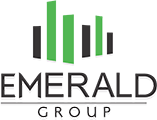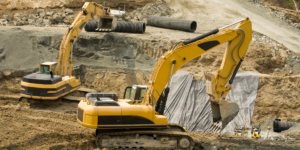All-inclusive Unit Rates Definition
A few readers asked how to build the all-inclusive unit rates.
The easiest way to explain it is to start by defining it. In one short sentence, an all-inclusive unit rate includes all costs and markups that we want to recover when we use/charge that specific unit rate.
For example, if we are calculating an all-inclusive unit rate for a tradesperson, we will most likely include the following:
- all payroll expenses: base salary, payroll burdens, premiums for overtime, paid travel or shift work, worker compensation;
- all expenses for travel and accommodation, if applicable;
- all small tools expenses, if applicable;
- all equipment expenses, if applicable;
- any supervision, if applicable;
- any temporary construction materials, if applicable;
- any permanent construction materials/equipment, if applicable;
- any company overhead, if applicable;
- profit, if applicable.
From the list above, it is easy to understand that an all-inclusive unit rate can include all items listed or only some of them. It all depends on what costs and markups we need to recover when we charge the client.
Types of All-inclusive Unit Rates
We can develop unit rates starting from very simple ones, like the labour rate for a tradesperson, to extremely complex ones. An example of a complex unit rate would be the installation of a permanent piece of equipment, an underground pipeline, or a cubic meter of earth excavation/backfill/disposal. We can get as simple or as complex as we desire to fit our costing purpose.
For an experienced cost estimator, building a unit rate is more like a routine exercise. We know our production rates, crew composition, material costs, overhead expenses, etc.
For the entry-level cost, the estimator can be more challenging at the beginning. But trust me, once you understand the unit rate calculation methods, you will see how useful this skill can prove.
We can divide the unit rates into the following types:
- Hourly rates, or
- Item rates
1. Hourly Rates
What do I mean by that? The hourly rates are based on labour and/or equipment charges per hour. Example of all-inclusive hourly rates:
- Excavator hourly rate. This rate can include the following costs, depending on the requirements:
- Equipment rental
- Equipment maintenance
- Equipment insurance
- Fuel
- Operator
- Company overhead
- Profit
- Carpenter hourly rate. Let’s say we want to calculate the charge-out rate for a carpenter. This rate would include the following costs, depending on the circumstances:
- Base hourly rate
- Overtime
- Paid travel time
- Labour burdens
- Worker’s compensation
- Small tools
- Vehicle (pick-up truck)
- Company overhead and indirect costs
- Profit
- Composite crew hourly rate. This rate is calculated the same way as the above, so we have all the crew members instead of one tradesman.
Specific to hourly unit rates is the fact that they are not based on performance. It does not make any difference if the equipment, tradesman or crew achieve more or fewer units per hour. The risk for costs associated with the performance is absorbed by the end-user of the unit rate.
2. Item Rates
The item rates differ from the hourly rates by the unit of measure and are more complex to calculate. An item can be defined as a simple construction activity or a collection of construction activities that form a specific item.
Let’s look at one simple example, the installation of an underground pipeline. This item would include some or all of the following construction activities (the list is not exhaustive, it all depends on the particular application):
- Topsoil excavation
- Topsoil disposal or stockpile
- Trench excavation
- Trench excavation support
- Dewatering
- Pipe base gravel installation
- Pipe and associated items supply
- Pipe and associated items installation
- Pipe backfill
- Trench backfill
- Site restoration
- Site mobilization/demobilization
- Indirect costs
- Company overhead
- Profit
Items 1 to 11 above can be used as stand-alone simple items or as part of the complex item.
The most important thing to consider when calculating unit rates is what are the costs and profits that need to be recovered. For example, let’s assume that we are a general contractor and would like to calculate the unit rate for the item above. If we are going to self-perform all of the activities, we would most likely include all the costs as listed above. If, on the other hand, we are going to use a sub-contractor to perform all of the activities, we would use the unit rate from the subcontractor and only add items 13, 14 and 15. The subcontractor, though, would calculate the unit rate inclusive of all the items from 1 to 15.
The item unit rates are very much affected by the labour productivity we assume when calculating the unit rate’s labour component. Therefore the risk for costs associated with performance is absorbed by the entity which owns the unit rate.
Unit Rate Development Steps

This was my view on how to calculate all-inclusive unit rates. I am sure there are many other views on this issue, as each of us has various levels of expertise and cost-estimating experience. If you enjoyed reading this article and think it answered some questions you had, please share it with your network. I would appreciate it!
Also, please leave your comments in the comments section below. I would like to know your thoughts on this issue.





